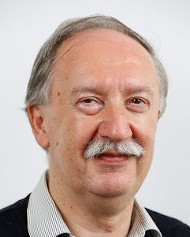Dr. Milan Janić, Senior Researcher at TU Delft Department of Transport & Planning (Holland) and Research Professor at the Faculty of Transport and Traffic Engineering of the University of Belgrade (Serbia).
Milan Janić (PhD) is transport and traffic engineer and planner. He has been Senior Researcher at TUD (Delft University of Technology, Delft, The Netherlands) and at present is Research Professor at the University of Belgrade (Belgrade, Serbia). Previously, he used to be a Leader of the Research Programs and Senior Researcher at OTB Research Institute of TUD, Manchester Metropolitan University (UK), Loughborough University (UK), and Institute of Transport of the Slovenian Railways (Slovenia).
Dr. Janić has been involved in many research and planning projects at both national and international scale for almost thirty-five years. He has also published numerous papers in the peer-reviewed journals and presented them at the national and international scientific and professional conferences. In addition to contributing to many edited books, he has been the author of the books: “Landside Accessibility of Airports: Analysis, Modelling, Planning, and Design’, “Transport Systems: Modelling, Planning, and Evaluation”, “Advanced Transport Systems: Analysis, Modelling, and Evaluation of Performances”, “Greening Airports: Advanced Technology and Operations”, “Airport Analysis, Planning and Design: Demand, Capacity and Congestion”, “The Sustainability of Air Transportation: A Quantitative Analysis and Assessment”, and “Air Transport System Analysis and Modelling: Capacity, Quality of Services and Economics”. As well, he has been the co-author of the book: “Transportation Engineering: Theory, Practice and Modelling”.
Plenary session topic:
High speed transport systems: analysis, modelling, and evaluation
The HS (High Speed) passenger transport systems are considered to be the rail-based operating HSR (High Speed Rail), forthcoming TRM (TransRapid Maglev), and the conceptual HL (Hyperloop). The HS air-based are the operating subsonic and conceptual supersonic aircraft. These systems have been analyzed, modelled, evaluated, and planned for a long time.
This presentation deals with analysis, modelling, and evaluation of the above-mentioned HS transport systems assumed to operate as the mutually exclusive alternatives along the given line/corridor and in the network of air routes, respectively. Regarding the HSR, TRM, and HL system, the methodology consisting of the models of evaluation attributes/criteria and the multicriteria evaluation method has been synthesized. Based on the analyzed characteristics of the system’s infrastructure and rolling stock/vehicles/trains reflecting the infrastructural and technical/technological performances, the indicators of operational, economic, environmental, and social performances have been defined and the corresponding analytical models developed respecting the interests/preferences of particular actors/stakeholders involved. These have been users/passengers, the systems’ operators, investors, local, regional, and national authorities/policy makers, and community members. These indicators have then been used as the evaluation criteria in the multicriteria SAW (Simple Additive Weighting) method. The proposed methodology has been applied to the case of line/corridor Moscow – St. Petersburg (Russia) under assumption that three HS systems exclusively operated according to “what-if’ scenario. The results indicated that, under given conditions, the HL could be the preferable alternative compared to TRM and/or HSR.



